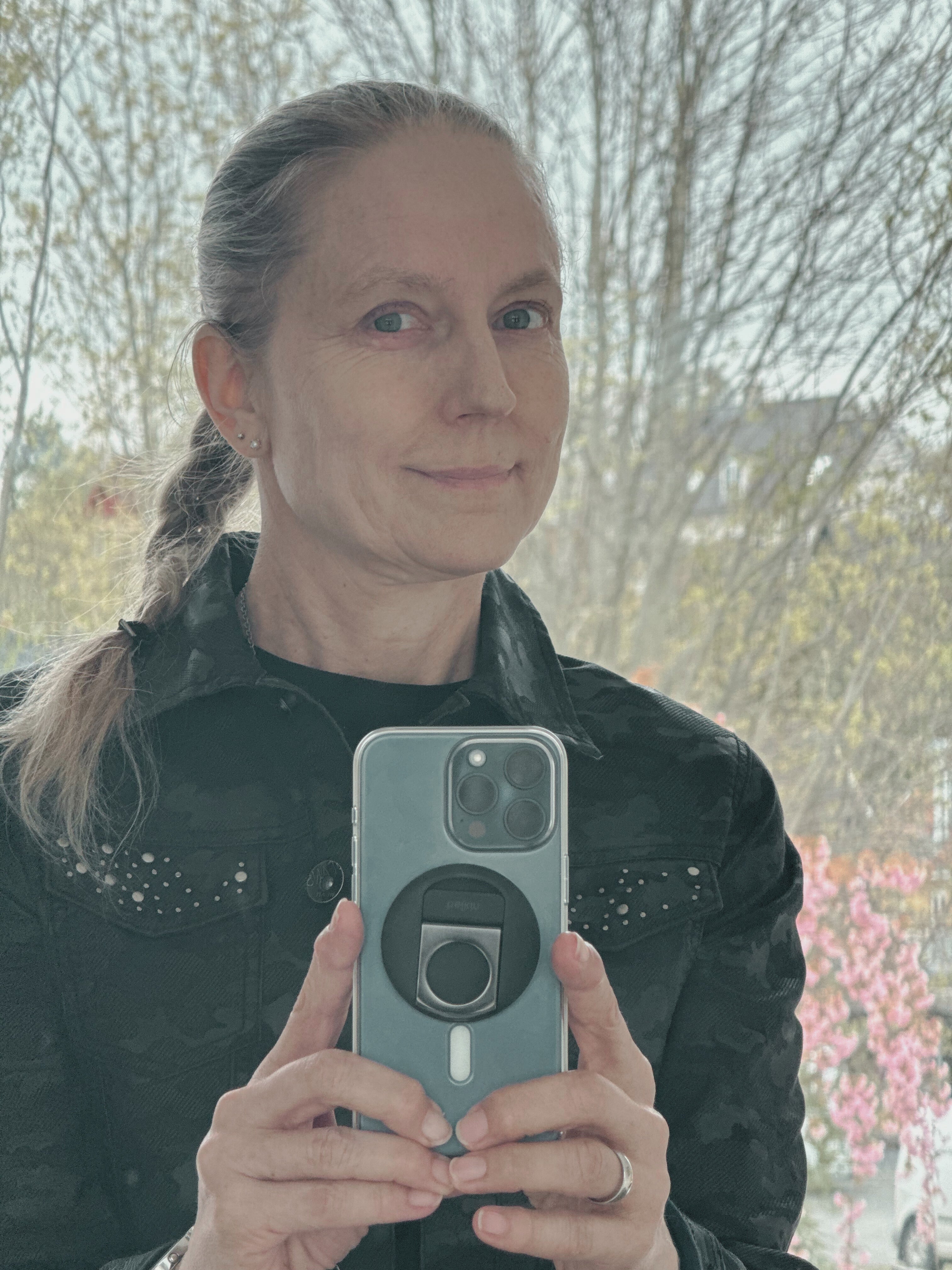TYPICAL QUESTIONS & ANSWERS
How do cold caps work?
Cold caps reduce blood flow to the hair follicles during chemotherapy treatment. This minimizes the amount of chemotherapy that reaches the hair follicles, thereby reducing the risk of hair loss.
How effective are cold caps?
According to studies at the National Library of Medicine, controlled and randomized studies show that the use of a cold caps significantly reduces the risk of hair loss during chemotherapy. https://www.ncbi.nlm.nih.gov/pmc/articles/PMC5410200/. At least 8 out of 10 people retain their hair satisfactorily. The result depends on the type of chemotherapy, the combination of chemotherapy and other individual factors. For those who retain their hair, almost everyone will experience a varying degree of shedding. The most common is to shed 10-50% of the hair, but evenly distributed, in a successful course. Although 50% sounds like a lot, those around them will usually not notice any change in appearance and the individual will not need a wig or other headwear.
Within 4-6 weeks you will know if the cold caps are having the desired effect on your hair.
Is the cold cap method safe and approved?
The cold cap technology has been known since 1970 and is approved by health authorities worldwide, and in 2015 the method received the prestigious A++ FDA approval in the USA, which is an international testament to the quality and safety of the method. Rapunzel's cold caps are CE marked and Rapunzel is registered with the Danish Medicines Agency.
Is there an increased risk of metastases when using cold caps?
No! It is an old myth that cold caps cause brain metastases. International, controlled and randomized studies have rejected this hypothesis. The caps only cool the very outer layers of the hair-bearing part of the scalp. The brain is not frozen - that is simply not possible. Cold caps work in exactly the same way as cold gloves and cold socks, which many people are offered in hospitals to protect their hands and feet during certain chemotherapy treatments. If you encounter healthcare professionals who are not up to date on this knowledge, we recommend that you seek insight yourself. Check out the latest studies at the National Library of Medicine https://www.ncbi.nlm.nih.gov/pmc/articles/PMC5410200/, which the Danish National Board of Health has also reviewed.
Who can use cold caps?
Cold caps cannot be used for all types of cancer. As a rule, it must be a solid tumor. Examples of this are typically breast cancer, ovarian cancer, liver, lung and gastrointestinal cancer where treated with chemotherapy that causes hair loss. If you are in doubt whether you can use cold caps, you are welcome to contact us for individual clarification.
Does it work on all hair types?
Cold caps work regardless of hair type. If you have Asian hair, Afro hair or strong red hair, the pre-treatment is slightly different, but you will be informed about this at the rental.
Can I bring cold caps to the hospital for my chemotherapy treatment?
Yes, you have the right to bring any assistive device, including cold caps, to the hospital as long as you are self-reliant. We always advise that you inform the staff that you will be using cold caps well in advance.
Hvad gør jeg, hvis jeg ikke har en pårørende der kan hjælpe mig på mine kemodage?
Hvis du ikke har en pårørende der kan hjælpe dig, skal du tage fat i os hos Rapunzel. Vi har nogle frivillige hjælpere tilknyttet, ring til os - så ser vi om vi har en frivillig hjælper i netop dit område.
Are cooling caps a public offering?
From January 2026, Danish breast cancer patients will be offered mobile cold caps in connection with chemotherapy. The scheme is a pilot project in Cancer Package V, which aims to assess how the offer can be handled in practice, before possibly spreading to other cancer areas.
Kan jeg leje kølehætter hos Rapunzel, selvom jeg ikke bor i Danmark?
Ja! Vi har også brugere, der ikke bor i Danmark. Ring eller skriv til os i god tid, hvis du har ønske om at bruge kølehætter udenfor Danmarks grænser, så hjælper vi dig.
Er der bivirkninger forbundet med brugen af kølehætter?
- Nogle oplever let hovedpine eller bliver døsige under brugen. Andre oplever brainfreeze ligesom når vi spiser is for hurtigt på en varm sommerdag. Brainfreeze går over igen efter få minutter og kan forebygges ved at tage håndkøbssmertestillende medicin, -rådfør dig med dit behandlingsteam.
- Vi anbefaler at du eventuelt bruger Seaband armbånd eller tygger tyggegummi. Talt eventuelt med afdelingen, om de har midler mod kvalme du kan bruge.
How long does it take to use cold caps?
The cold caps are used approximately 30-45 minutes before, during and up to 120 minutes after the chemotherapy treatment has ended. This means that you should expect to wear the cold caps for approximately 4-5 hours on the days you have chemotherapy.
You can prepare in the waiting room or other suitable places in the hospital. You can either continue the post-cooling in the waiting room, in the Cancer Counseling Center or drive home with the cap on, with any planned changes along the way. The cold caps are mobile, so you are also mobile and therefore do not take up time from other patients in the outpatient department.
Må jeg starte forkøling hjemmefra?
Vi anbefaler at du altid forkøler på hospitalet, bl.a. for at sikre at du ved om behandlingen er forsinket, eller andet.
Kan jeg kulde-lindre, hvis jeg synes det er koldt?
Hætterne køler pandestykket og ørerne ned, selvom der ikke er hår der skal bevares her. Du kan med fordel sætte enten vatrondeller, trusseindlæg, hæklede/strikkede rondeller ind på panden/øre. Det er dog meget vigtigt, at det du bruger ikke er for tykt, så hætterne ikke løftes unødigt.
Hvad gør jeg når hovedbunden føles tør og klør?
Det er ikke ualmindeligt at din hovedbund føles tør og klør lidt. Du må ikke klø! Nogen bruger antihistaminer til at afhjælpe kløen, tjek ALTID med personalet på afdelingen inden du tager noget håndkøbsmedicin, for at være sikker på at det er i orden at tage under dit kemoforløb.
Må jeg bruge hårserum under kemoforløbet?
Vi anbefaler ikke hårserum, der benyttes i hårbunden, for ikke unødigt at stresse hovedbunden mere.
Må jeg bruge leave-in conditioner eller hårolie under kemoforløbet?
Ja du må gerne bruge leave-in produkter i forløbet, men kun i dine længder. Det er vigtigt at du fugtmætter dit hår.
Må jeg bruge hårtørrer/glatte/krøllejern?
Desværre ikke. Det er hårdt og slidsomt for håret når du bruger stylingmetoder som disse - du vil nemt komme til at hive unødigt i håret. Vi anbefaler først at du bruger ovenstående, når du er holdt op med at fælde efter endt kemoforløb.
Hvornår må jeg farve mit hår igen?
Vi anbefaler at du først farver hår igen 6 måneder efter endt kemoforløb.
Må jeg gå til frisøren, når jeg bruger kølehætter?
Man må gerne gå til frisøren - men gå til en frisør du kender og har tillid til. Vask dit hår hjemmefra, og bed frisøren om KUN at klippe spidser. Ingen hårvask, ingen hårbørste, varmebehandling, produkter eller kam i håret.
Hvordan ved jeg om kølehætterne virker?
Under kølehætteforløbet vil de fleste opleve at fælde væsentligt mere hår end normalt. Fældningen vil afhænge af typen af kemo samt rækkefølgen af disse. Hvis kølehætterne virker for dig, vil du opleve en jævn fældning, dette vil du kunne vurdere efter ca. 6 uger.
Jeg fælder mere end jeg plejer, er det normalt?
- Det er helt normalt at man fælder mere i den periode man får kemoterapi, også selvom man bruger kølehætter. I forvejen taber vi 100-200 hår om dagen, - det er de færreste der tænker over dette.
- Den internationale succesrate for kølehætter er, at det virker for 8 ud af 10, med hårtab mellem 0-50%. Blandt de brugere der oplever over 50% hårtab, er mange dog glade for at de har brugt metoden, da de ikke har oplevet totalt hårtab.
Hvornår holder man typisk op med at fælde?
Det er meget forskelligt. Nogen oplever allerede at fældningen stagnerer imens de stadig får kemoterapi, i slutningen af forløbet. For andre er det først i ugerne efter. Ca. 1,5 måned efter endt kemoterapi er du holdt op med at fælde mere end du ville gøre normalt.
Skal hætterne rengøres imellem brug?
- Hvis hætterne er blevet synligt beskidte, kan du tørre dem af med en opvredet klud - det er vigtigt at hætterne ikke puttes i vand, det kan de ikke tåle. Hvis ikke hætterne er synligt beskidte, skal du blot fryse dem ned igen.
- Hætterne rengøres af Rapunzel imellem hver ny bruger.
Hvordan returnerer jeg mine kølehætter?
- Har du modtaget en returlabel ved levering af hætterne, så følger du anvisningen:
- Gå til: https://returns.postnord.com
- Indtast Shipment ID (står på den returlabel der lå i din pakke).
- Indtast dit navn, telefonnummer og e-mail.
- Indtast adresse hvorfra kufferten skal afhentes.
- Har du ikke modtaget en returlabel eller ønsker du at aflevere personligt på vores lager i Brøndby:
Kontakt Rapunzel pr. telefon eller mail, vi vil så arrangere det med dig.

CLINICAL STUDIES
- PubMed: Scalp cooling and scalp metastases, a systematic review
- PubMed: Scalp cooling to prevent chemotherapy-induced alopecia
- Chemo-induced hair loss and its psychosocial impact
- Scalp cooling prevents persistent chemotherapy-induced alopecia
- Cancer Control
- Ministry of Health's review of studies
- Has scalp cooling reached the level of standard care?
- Scalp cooling: No increased risk of scalp metastases
- Scalp cooling efficacy, safety, and tolerability review
- Guide: Understand & prevent chemo-induced hair loss
- Side effects and hair loss with scalp cooling
- FDA: Clears expanded use of cooling cap
- Scalp cooling safely reduces chemotherapy hair loss
- Scalp-cooling during eribulin treatment for metastatic breast cancer
- Scalp cooling for hair loss in breast cancer, review & meta-analysis
“Total hair loss is both psychologically distressing and socially disabling for most patients."
The use of cold caps is therefore interesting for many, not least women who have had breast cancer surgery and who will have post-operative chemotherapy after their surgery, as these are otherwise healthy women who need to return to their normal lives with work, social activities, etc. as soon as possi
Leading Physician Svend Erik Nielsen, North Zealand Hospital
-

-
"I gave a talk to a lot of people between the 15th and 16th chemo treatments! It was so cool to be normal in the middle of an abnormal time. Without hair on my head, I might not have been standing there."
Anne Helene, 52 years old
WOULD YOU LIKE TO HAVE A PERSONAL DIALOGUE?
We understand that many thoughts go through your head when you are diagnosed with cancer and are facing a course of chemotherapy.
You are welcome to write to us and we will contact you as soon as possible.

